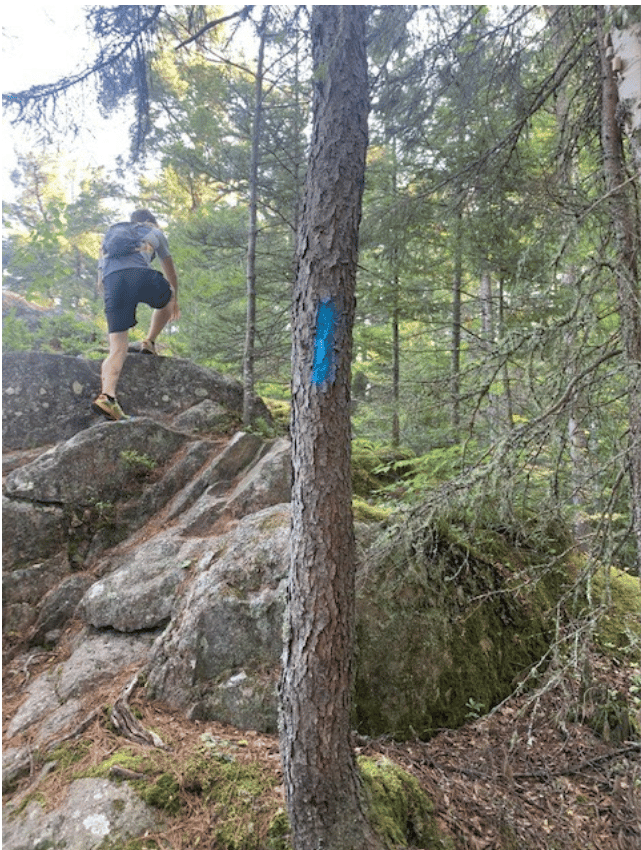
Earlier this summer, blue painted blazes were discovered on a hiking trail in the Boundary Waters Canoe Area Wilderness. The markings are commonly used on trails outside the wilderness, such as the Superior Hiking Trail, but are prohibited on trails in designated wilderness areas.
The Superior Hiking Trail Association reported that the Forest Service contacted the organization after the discovery to help educate the public about the problem.
“These blazes deface the natural, scenic, and primitive qualities of the Angleworm Trail, detract from a wilderness experience, and degrade its wilderness character,” Ann Schwaller, Forest Program Manager for the Boundary Waters Canoe Area Wilderness, said.
Unlike the Superior Hiking Trail, which traverses non-wilderness lands owned by county, state, and federal governments, the Angleworm Trail is a remote 12-mile path through the Boundary Waters, protected by the federal 1964 Wilderness Act.
“An area of wilderness is further defined to mean (…) land retaining its primeval character and influence, without permanent improvements or human habitation, which is protected and managed so as to preserve its natural conditions,” the Act says.
Blazes such as those found on the Angleworm Trail are in direct violation of these principles, as well as Leave No Trace guidelines. It falls under the same restrictions that require trail maintenance to be done without mechanical tools. In fact, any trail improvements without proper authorization are prohibited on the National Forest. Groups like the Superior Hiking Trail Association have legal partnerships with the Forest Service to appropriately manage trails.
The Angleworm Trail begins and ends on the north side of the Echo Trail, northwest of Ely. A short spur, which also serves as a canoe portage, leads to the beginning of the loop around Angleworm, Whiskey Jack, and Home Lakes.
The Forest Service warns hikers that the primitive trail may be challenging to navigate, and map and compass skills are recommended. That’s a big part of the appeal to many hikers, who say more marked and maintained trails like the Superior Hiking Trail are a great introduction, while the wilderness offers challenges and rewards for more experienced backpackers.
“The whole wilderness aesthetic is man is a visitor; leave no trace,” Zach Johns, a longtime northern Minnesota hiker and trail advocate, told the Superior Hiking Trail Association. “That’s a trace when you put paint on stuff. It’s a privilege to have a place where it’s harder, where it’s more primitive.”
The Superior National Forest asks anyone with information about who painted the blazes along the Angleworm Trail to contact the Kawishiwi Ranger Station at (218) 365-7600 or the Superior National Forest Supervisor’s office at 218-626-4300.
More information:
- Trail Vandalism in the BWCAW – Superior Hiking Trail Association
- Angleworm Hiking Trail – Superior National Forest

